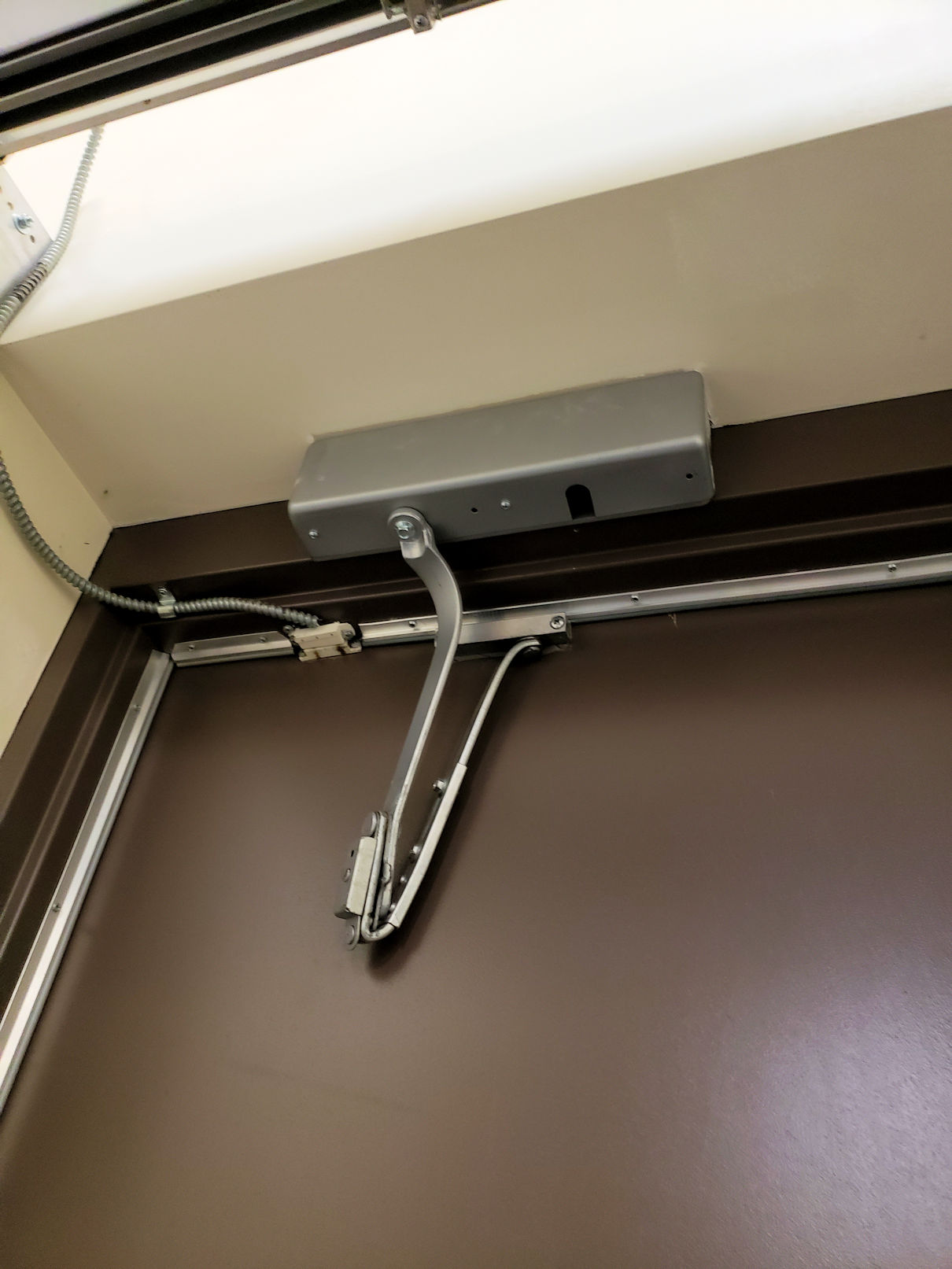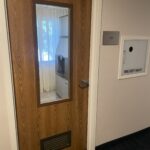This is why I prefer parallel arm door closers over top jamb or regular arm. At first glance I thought it was on a high school since this type of damage is not uncommon in high-abuse environments, but it’s actually the stock room of a retail store.
You need to login or register to bookmark/favorite this content.







Isn’t that one of those door closers where the arm can be locked to keep the door open? I guess the employees had a hard time trying to close the door and they didn’t know why. Also, Those type of closers are not permitted for store rooms are they? At least not in the healthcare nursing home industry.
I am not familiar with that model of closer but is that a hold open arm that failed? I like the aesthetics of a parallel arm closer but we have a lot of trouble getting them adjusted right to latch doors properly with the varying air pressures we have around campus. Surprisingly we have very little vandalism.
I do not like to install closer with parallel arms as they need to have an adjustable spring and then you have to turn up the spring tension to max so the door will have the steam to close the door, back in 1984 the company I worked for did a test with LCN 4040 and 4110 Closers, we mounted them on regular 3 x 7 doors with standard and parallel arm mountings, we were able to prove to a customer that you loose 40% of the spring strength with Parallel mounting the arm and door closer.
This is why Parallel arm mounting should only be used when absolutely required to get the job done.
If that had been a real Norton 7500-UNITROL there wouldn’t be a picture. This is cheap garbage that sells for fifty bucks. One fifth the cost of a real closer. You get what you pay for!
It’s melting! 😉
I’m guessing they went with top jamb instead of parallel so the installer didn’t have to cut the weatherstrip around the PA shoe.
Hi Eric –
I thought about that too, but now they have a bigger problem to deal with.
– Lori
No PA arm, no PA installation.
To work correctly, that closer, as armed, can only be mounted Top Jamb, as dictated by the spring shoe mounted to the door.
Am I missing something? At this point how does the door even open?
This is typical of a novice or inexperienced installer. Usually a campus or institutional handyman/or woman. It also looks like it has a “fuseable link” .
As far as adjusting for static air pressure most installer always forget to preload or with LCN 4040-41 or XP to turn the backcheck adjustment valve in on the reverse side of the unit .
Our static pressure problems started when they started putting VFD’s on the air handlers. We have areas that might have a negative air pressure at 7AM and significant positive pressure at 8AM. When the closer is adjusted to latch the door with positive air pressure it is hard to push open when the air pressure goes negative. Regular arm closers seem to be slightly more tolerant of the changes.
This is not fuseable link, it’s a detent arm with the bearing and plunger in the “elbow” joint instead of head jamb bracket.
As for the backcheck selection valve, that is the most commonly forgot about setting on the LCN 4040 (as well as the knockoffs)
Normally, the door switch goes on the latch side of the door.
Jamb-mounted, concealed door closers can offer a useful solution in some circumstances.
I had a customer with a similar problem but they had friction HO arms and did not opt for any kind of stop device IE: floor, wall, or overhead stop. People would push the door open enough that it would tighten that nut so tight that you could not break it free. Of course people tried to break it free/close it by pushing on the door and guess what?! the arm bent!!! 🙂 It must have been a garbage closer and definitely not the architect, installer, or customer’s fault. Oh wait it was the top model of a name brand closer…. so weird, the laws of mechanics were proven again…… (Note: The architect changed to these arms rather than the thumb turn/stop type for aesthetics!)
Every door needs a stop!!
– Lori